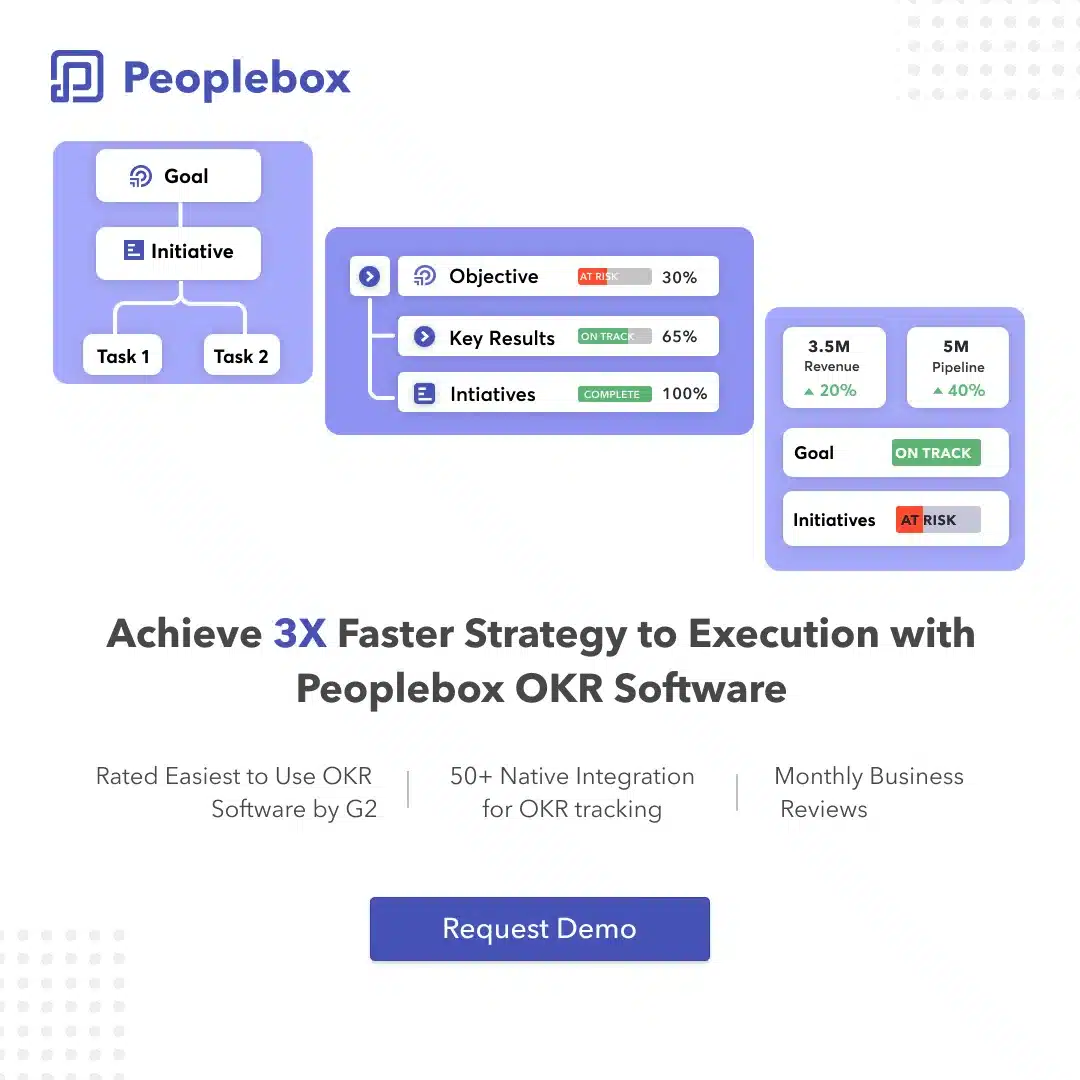The dawn of 2020 brought about a new wave in workplace dynamics and corporate culture.
Right now, remote work has become the backbone of our economy and its functioning.
Managers need to adjust to these new developments and learn to manage remote employees effectively to continue getting the required results.
As per the report, around 43% of the total US workforce worked off-site.
This number has risen dramatically in the wake of the Coronavirus pandemic.
Naturally, the biggest challenge for the managers presently is to adapt themselves to work with remote employees.
You may need to get more familiar with technology for communication and coordination.
To put it simply, a manager needs to realign herself for getting accustomed to new practices for leading and managing remote employees.
So, whether you’re transitioning your employees to remote work as a result of a pandemic or are planning to hire remote workers for diversity, you are required to adopt a different perspective.
In this article, we throw light on ways that can help you manage remote employees effectively.
But before divulging into this matter, let us first address a few common challenges that you may face while managing remote employees.
Common challenges faced by remote employees
1. No face to face contact
Meeting your direct reports every day has many benefits which you would realize only when working with a remote team.
The ease of just dropping in to clear a doubt or have a quick update session vanishes with remote work.
Now, you need to send an invitation for a virtual meeting and it feels more formal than it actually is.
Moreover, meeting an employee every day also helps in understanding their mood, motivation level and productivity without having to indulge in verbal communication.
Virtual communication leaves less or no scope for non-verbal cues.
2. Barriers in digital communication
How often do we end up missing out on an important email because it went to the spam folder?
With all its benefits, digital communication has quite a lot of bottlenecks which can hamper coordination.
When you work with remote employees, you cannot peer over their cubicle and discuss an issue with them.
Simple bottlenecks may require you to take multiple calls which depend on external factors like internet bandwidth and equipment.
Hence, change in communication methods may take a while to get used to.
3. Distractions and disturbance
Meetings with remote employees come with their own background noise.
You may hear a toddler crying or perhaps, a waiter asking for the order if they’re working from a coffee shop.
You’re no longer in a conference hall with noise-cancelling doors and windows.

Moreover, your remote employee is not restricted to your office premise.
She may work as per a different schedule and you would have to get familiar with it.
In case of a situation like the present Covid-19 crisis, most of your employees are dealing with much more than just work-related stress including uncertainty about future and health-scare.
4. Isolation and loneliness
When an employee works in an office space, they are surrounded by their office colleagues who often become their social circle.
As they resort to remote work, they lose touch with human interaction and are glued to their screen without a break.
This isolation due to remote work may even lead the best of your talent to become sluggish, uninterested and prone to mistakes.
In a situation like present when social distancing has become the norm, forced isolation has even led to anxiety and mental fatigue.
Just like every other benefit, remote work too has bottlenecks.
However, with the right methods, you can find a way to make the best of any situation and manage remote employees with ease.
Prevent Isolation & Reduce Burn-out
Send your remote teams for virtual coffee and help them know more about each other with Rapid-fire quiz and interesting ice-breakers.
Effective One on One Meetings
We built a software that automatically schedules, lets you set agenda, take notes, exchange feedback and track actions – all in one place.
OKR Software - Used by 500+ Companies
Transform your managers into leaders through personalized coaching, bite-size learnings and make it super easy for them to have meaningful 1:1s, check-ins, and align goals(OKRs).
12 tips to manage remote employees effectively
1. Set a routine of morning check-in
In an office, an employee’s day begins with her ride to work and casual banter with her colleagues.
Some organizations have a routine of a daily stand-up where they discuss tasks and a plan for the day.
These quick meetings and customary greetings help one switch to work mode.
Despite its perk of saving you from the morning traffic, remote work devoid us of these little things that help one focus on the workday.
So then, how does a manager ensure that her remote employees are set for the day? One way is to replicate the daily stand up meeting/ scrum call/ status update meeting virtually.
You can have a group call and discuss the plan for the day with everybody.
You can also switch to starting the day with a “good morning” text on your group chat. The idea is to keep in touch with your remote employees throughout the day and remain available if and when they need you.
These small gestures go a long way in helping remote employees remain focused, productive and more importantly, engaged.
2. Find a suitable way of communication
When we work from home, the quality of communication largely depends upon the tools you’re using.
Some theories encourage video communication while some experts swear by the effectiveness of text messages.
However, there’s no one-size-fits-all approach.
You need to find a tech tool which works best for you and your remote employees.
Make sure that you test it and see how it works for a few days.
Once you have found a common tool and method, your communication will feel more effortless and organic.
PRO TIP: Let your direct report suggest the tool they prefer. It would mean that they’re already comfortable with it and will ease the remaining process.
3. Use video calls, but only when necessary
If you start googling for ways for keeping your remote employees engaged, video conferencing will probably be the topmost tip.
And, why not? It helps you bring a personal touch to the conversation. It also ensures that your direct report is attentive and focused on the meeting.
However, in recent times, there has been a new thought process in this regard.
After the coronavirus pandemic hit us, most of us had to resort to remote work.
As a result, video conferencing became a huge part of the day. Every minute conversation has become a reason for a long video call.
On average, an employee spends more time in video meetings these days than working for real.
Today, most of us can vouch for the fact that we feel more tired these days than we felt before.
In a video call, we are constantly looking at a screen without any option of relaxing yourself or averting your gaze.
Does this mean you should completely avoid video calls? And if yes, then what are the other options?
Well, the answer lies in moderation.
You need to find a middle ground where your video calls do not become intrusive or burdensome for your direct report.
Here are a few tips to help you find the right balance –
- Reduce the duration and the frequency of video calls. A weekly video check-in for a few minutes can prove to be a good refresher instead of a daily call.
- Always ask your direct report if they are up for a video call. Give them an option to choose an audio call instead.
- If you’re not familiar with an employee, it is best to give them time adjusting to video interactions to avoid any awkward feeling.
4. Make one on one meetings a ritual
The fact that one on one meetings are crucial for management is well-established.
However, these meetings become even more important when you’re working with remote employees.
When your direct reports work from home, their communications tend to become routine and only task-related.
There are no chances for you to meet them in the hallways or get to know them over a team lunch.
The lack of these informal conversations leads to an adverse impact on interpersonal relations between a manager and remote employees.
This affects how an employee perceives herself, her self-esteem and her productivity.
One on one meetings can help you hold your remote employee’s hand and guide them towards a better performance.
These meetings can become your aid in establishing a deeper bond with your remote employees.
As we discussed before, employees tend to feel lonely and isolated.
In the words of Kim Scott, author of Radical Candor:
Probably the most important thing you can do to build trust is to spend a little time alone with each of your direct reports on a regular basis.
When you take some time to listen to them, they feel valued and cared for.
They realize that their voice and concerns are being heard at the organization.
While working remotely, an employee might feel lost and abandoned.
A one on one meeting can help you assure them that their role is important and their tasks form an essential part of the great organizational goal.
The benefits of one on one meeting are plenty; all you need to do is strike the right conversation ( and do it regularly).
Pro Tip: If you’re unsure of how to begin the right conversation during your one on one meeting, you can always take help from online one on one meeting tools.
From setting an agenda to reminders for follow up, they can help you improve the quality and output of your one on one meetings.
Prevent Isolation & Reduce Burn-out
Send your remote teams for virtual coffee and help them know more about each other with Rapid-fire quiz and interesting ice-breakers.
Effective One on One Meetings
We built a software that automatically schedules, lets you set agenda, take notes, exchange feedback and track actions – all in one place.
OKR Software - Used by 500+ Companies
Transform your managers into leaders through personalized coaching, bite-size learnings and make it super easy for them to have meaningful 1:1s, check-ins, and align goals(OKRs).
5. Be mindful of the time zones
The biggest perk of a remote job is getting to work with talent from across the globe.
When you hire remote employees, you can move beyond geographical boundaries and can choose your team based on sheer talent.
While it is great to have a mix of diverse employees from different backgrounds, it can become a little daunting to manage them.
In most cases, when a manager’s day ends, the day for her direct reports’ begins.
The challenge here is to ensure that you remain in touch with your direct reports while making them compromise on their schedule by working in ungodly hours.
You are their role model for right behavior; hence, you need to respect their schedule and consider their time zone.
Managing remote employees from a different continent may take you a few days of early morning wake-up calls but their result is always satisfactory.
Here’s how you can ensure that your remote employee from a different time zone is always in the loop with you.
- Once in a while (say, a week), wait for them to log-in and drop a casual hello.
- Always pre-schedule your meetings and decide on a time mutually.
- If they stay up late for you, ensure that you ask them to relax late the next day.
- Turn your stand up meeting into an email conversation and send it daily.
6. Focus on employee development
Be it a remote employee or otherwise, career progression is important for everyone.
People work with you because they want to alleviate themselves with learning and find the best possible opportunity for their talent.
In fact, employee development has been touted as one of the major factors for higher retention rates.
Often, the development of remote employees takes a backseat as they ‘re not within your vicinity.

In unprecedented times like the present pandemic, career conversation and employee development may even seem like a futile discussion.
Your interest in their development can motivate them to be more efficient and result-oriented.
When you help them envision a growth path for themselves, they become more inclined to cooperate with you and give their best.
PRO TIP: There are many online training and courses that can benefit your remote employees. Encourage them to enroll themselves in them.
Prevent Isolation & Reduce Burn-out
Send your remote teams for virtual coffee and help them know more about each other with Rapid-fire quiz and interesting ice-breakers.
Effective One on One Meetings
We built a software that automatically schedules, lets you set agenda, take notes, exchange feedback and track actions – all in one place.
OKR Software - Used by 500+ Companies
Transform your managers into leaders through personalized coaching, bite-size learnings and make it super easy for them to have meaningful 1:1s, check-ins, and align goals(OKRs).
7. Recognize their efforts
The best way to engage and manage employees is by letting them know that their work is valued and their efforts are appreciated.
In the words of Dale Carnegie, a famous leadership guru –
People work for money but go the extra mile for recognition, praise and rewards.
For remote employees, recognition also leads them to the realization that their contribution is visible and being noticed at the workplace.
You don’t meet them every day – this means you can’t pat their back, give them a thumbs up or a quick “good job” in the team meeting.
Remote employees also miss out on the excitement of celebratory lunches and get-togethers.
Hence, a manager should figure out ways to make them feel included and recognized.
At present, the situation has become even more draining due to the constant pressure of delivering goals and living under the uncertainty of a global pandemic.
During such times, a little praise and recognition can go a long way in lifting the spirits of employees working from home.
If you have run out of ideas on praising employees in a remote work setup, here are a few tips –
- Send a mail appreciating the good work of an employee across the team.
- Mention their achievements in group meetings.
- Make sure you mention feats in the group thread.
- Conduct a ‘reward & recognition’ virtual event once a month.
- Dedicate a good amount of time discussing their good work during your one on one meeting.
8. Give regular feedback
Feedback and constructive criticism help a manager in building a team which is open to change, ready for challenges and adaptable to changing requirements.
Feedback is also a pillar which can help you establish a connection with your direct report while helping them to improve their performance.
For a remote employee, feedback is a way of knowing that her manager cares about what she does.
Lack of feedback may mean disinterest or even worse, apathy on the part of the manager.
Hence, you need to make feedback a regular part of your conversations.
Giving honest feedback to remote employees, which can often be constructive, is a mucky area you would want to avoid.

In a virtual set up, conversations lack the support of non-verbal cues and its context may get lost in translation.
Here’s how you can ensure that you provide feedback to your remote employees in the right way-
- Make feedback an important part of your one on one meeting agenda where you can give a personalized opinion to your direct report.
- If your feedback contains constructive criticism, try to speak about their strengths when you speak about their weaknesses.
- Follow-up on the action items decided upon by both of you.
9. Provide autonomy
The main difference between managing remote employees and on-site employees is working in the same vicinity as them.
You cannot walk up to them to clear a doubt or have an impromptu discussion.
As a result, many managers end up either having no coordination with their remote employees or being too intrusive.
The idea is to trust your remote employees’ sincerity and capability and avoid micromanaging them.
Do not focus on the process, concentrate on the result.
However, you can always set some rules to ensure that the workflow is continuous. Some of them can be –
- Make a rule to compulsorily respond to messages within 24 hours.
- Any delay should always be communicated.
- Never cancel your one on one meetings except in the case of emergencies.
- Make status updates an essential part of daily tasks.
10. Align their goals with team objectives
Your remote employees are a significant part of your team. Studies reveal that remote workers are often more productive than their regular counterparts.
Yet, their role in the bigger picture often gets sidelined by those whose presence is more approachable and tangible.
Sometimes, their opinions are overlooked in the team meetings and their contribution seems to be limited to filling talent gaps.
This behavior may lead them to dissatisfaction.
As a manager, you need to make them feel included and important for your team.
When they understand the correlation between their tasks and organizational objective, they feel motivated to contribute better.
PRO TIP: Speak about how their work led to better results in quantitative terms, i.e, increase in sales, better reviews or more site visits.
11. Understand their expectation
It is not easy to assess your remote employees’ needs and expectations.
You often speak about work assignments and indulge in small talk occasionally.
In the absence of regular meetings, many things are left unsaid.
Nonetheless, these small things are important as they help you understand and set the right expectations with your direct report.
One of the simplest solutions to this problem is having a detailed one on one meeting.
You must consider these meetings as a chance to discuss everything you wouldn’t regularly.
Try to keep them casual, light-hearted and discuss personal goals as well.
This practice will help your direct report become flair with you and lead to more honest discussions.
Detailed one on ones are also required right now when our teams are forced to work from different locations.
All of them might be facing different problems and expecting unique support from you.
Thus, make one on one meetings a regular event on your calendar.
12. Be clear, concise and conclusive in your communication
When you remote employees, the success of your management strategies will boil down to effective communication.
Since your direct reports are not physically present with you, you need to be in constant touch with them to ensure that they feel part of the team.
What is even more important is the clarity of your messages.
If you’re communicating a lot but the message is not correctly received by the remote employees, your efforts will fall flat.
Thus, your communication needs to be clear, concise and conclusive.
Here’s how John Eades, CEO of LeanLoft, described these three qualities
- Clear: Is the task clear? Have the direct reports acknowledged the task? Do they understand their responsibility?
- Concise: Is there a way to make my message as short as possible while including all the essential information?
- Conclusive: Do remote employees understand the implication of the task?

Wrapping up
Remote work is here to stay. It is our new reality and will only take up a bigger space in workplace culture in the times to come.
Hence, learning how to manage remote employees is the kind of upskilling you need at the moment.
Managing remote employees comes with its unique sets of challenges and perks and you need to find a way to balance them judiciously in your favor.
The easiest way to do so is by walking in the shoes of a remote employee and understanding her perspective.
Once you know what situations they may undergo, you will know how to manage them effectively.
And, there cannot be a better time to understand this than right now.
So, as you brace yourself for the new world waiting for us, learn how to manage and win with a remote team.
After all, the future is definitely remote.








